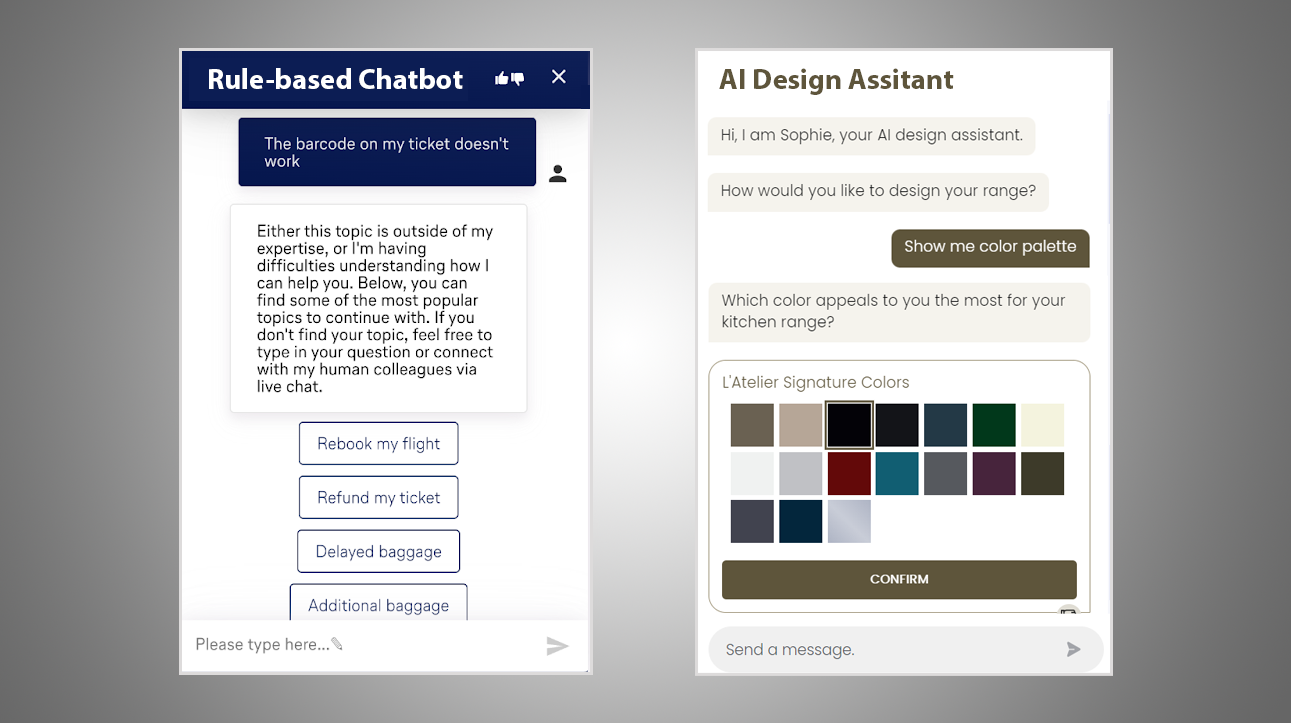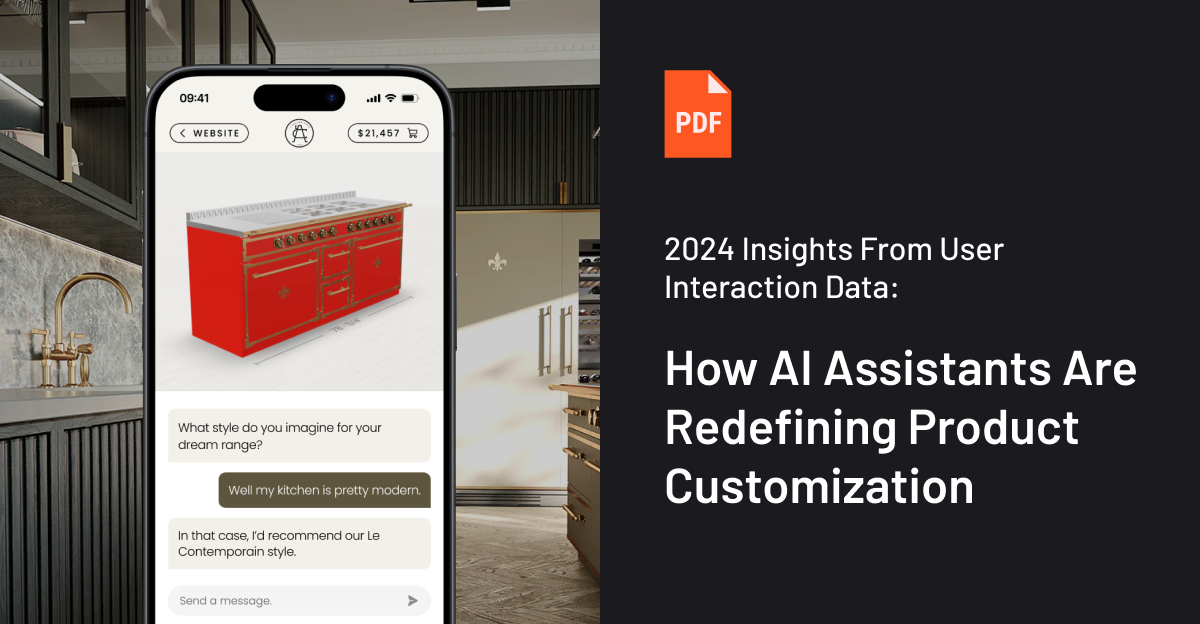Why AI Assistants Beat Rule-based Chatbots in Online Shopping
AI assistants are redefining the shopping experience with smart, human-like understanding and responses, and their ability to be a single source of truth. Discover what makes them so different from rule-based chatbots and why they're the future of online shopping.

Remember the early days of automated responses when shopping online? Those basic chatbots often left you frustrated with their canned messages like “I don’t understand your request” or “let me connect you with a human”. Fast forward to today, and AI assistants are taking over.
AI assistants understand complex questions and provide human-like responses. With more companies adopting AI, the future of online shopping looks brighter than ever. But there's still some confusion about what AI assistants are and how they differ from rule-based chatbots. Let's clear that up with some practical examples.
From Rule-based Chatbots to AI Assistants
Rule-based chatbots, also called decision tree chatbots, are the earliest form of chatbot technology. You've likely encountered these bots when trying to reach customer support online. Their adoption grew in the early 2000s as businesses recognized their potential for cost savings and efficiency in customer service. In 2017, a study found that 67% of consumers worldwide had interacted with a chatbot for customer support in the past year. However, these bots started to show their limits, especially with the arrival of AI assistants.
AI assistants are designed to simulate human-like conversations. The first major breakthrough was Apple's Siri virtual assistant, launched in 2011 on the iPhone 4S, making AI assistants widely accessible. Early AI assistants, however, often struggled with complex inquiries. The real game-changer came with OpenAI's GPT-3 in 2020, which brought human-level language understanding and generation to machines. Adoption of this technology is rapidly increasing, with 80% of retail companies expecting to implement AI by 2025.
How Rule-based Chatbots and AI Assistants Differ in Technology
Rule-based bots function according to a predefined set of rules and responses. When users interact with such chatbots, they follow a set flowchart or decision tree, responding based on specific keywords or triggers. These chatbots are deterministic, meaning their responses are predictable and inflexible. As a result, they can only effectively address the particular scenarios and questions they have been programmed to handle.
AI Assistants leverage advanced AI for more relevant interactions. They use Natural Language Processing (NLP) and Large Language Models (LLMs). NLP helps them understand and interpret human language, including context, nuances, and intent. LLMs, trained on vast text data, generate coherent and appropriate responses. This enables AI assistants to handle a wide range of queries and tasks, adapting to different scenarios and providing more flexible and accurate responses than rule-based chatbots.

AI Assistants vs. Chatbots: The Practical Test
To put the comparison into practice, we examined the response capabilities of rule-based chatbots and compared them to the AI design assistant Sophie that we developed for L’Atelier Paris to help users design high-end custom kitchens.
When opening a conversation with a chatbot, you're limited to predefined topics or typing your own. However, if your request doesn't contain the exact keyword the chatbot recognizes, you'll receive irrelevant canned responses or a message like “I did not understand your request.” You then need to rephrase your question to fit the chatbot's standards, which is very frustrating when you're just looking for an answer. Here’s an example from Verizon's chatbot when asked a question in natural language:
Starting a conversation with an AI assistant is a different story. With Sophie, the AI design assistant we developed for L’Atelier Paris, you have three options: get help designing your kitchen from the start, design it yourself, or describe your dream kitchen and let the AI inspire you. If you describe your dream kitchen in natural language, the AI can understand and provide a unique response based on your preferences. You don't have to worry about the wording you use, thanks to its deep contextual understanding and product knowledge:
Another key difference in practice is how a chatbot handles your request compared to an AI assistant. Chatbots can only manage limited conversations and often direct you to a real person who may respond days later or send you articles that might not resolve your issue. Here is an example from Lufthansa’s chatbot when asked for help with the barcode on the boarding pass:
The AI design assistant, on the other hand, can be your unique source of truth. You can sort everything from product design and configuration to purchasing and transportation in the chat area. If you ask the AI assistant to change a kitchen component, it will do it in real-time for you. If you're stuck, it will help you resolve the issue instead of directing you to an article or FAQ:
Final Thoughts
The evolution from rule-based chatbots to AI assistants marks a significant leap in technology. While rule-based chatbots laid the groundwork for automated customer service, their limitations are clear with complex, multiple, and unique human inquiries. AI assistants, powered by advanced large language models (LLMs), have transformed this landscape by offering dynamic, context-aware, and human-like interactions.
Brands need to adopt AI assistants early enough to avoid frustrating customers with outdated chatbots. Today's online shoppers want an instant experience, from browsing to delivery. AI assistants provide real-time help, 24/7 availability, and act as a single source of truth to solve issues quickly. Embracing AI assistants is key to meeting customer expectations and staying competitive.

Salsita AI Design Assistants
Salsita empowers e-commerce brands by enabling their customers to discover, design, and experience their dream products with Conversational Configurators. At the core of this customization experience is our AI design assistant, which allows shoppers to configure even the most intricate products while receiving expert guidance and real-time recommendations.
To enhance the AI assistant's product, configurator, and company knowledge, Salsita leverages Conversational UI technology. The AI actively engages users by asking discovery questions, offering recommendations, and providing invaluable assistance. With the growing popularity of mobile shopping, users can also opt for a voice-activated feature to interact with the AI, offering a seamless and convenient experience.
Do you want to learn more about Salsita AI design assistants and Conversational Configurators?



